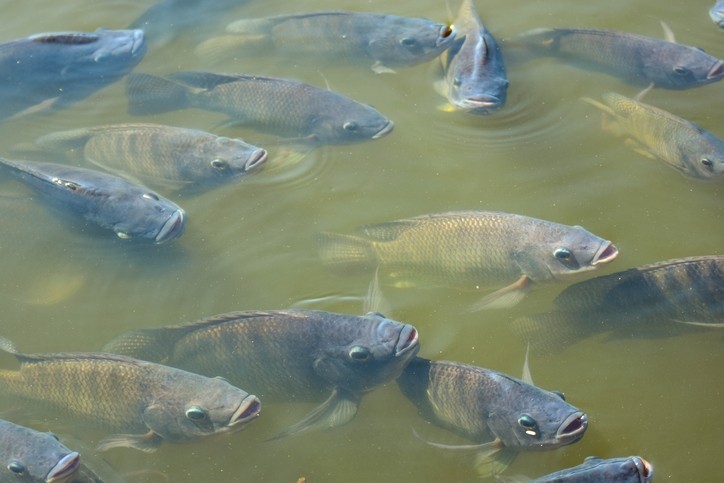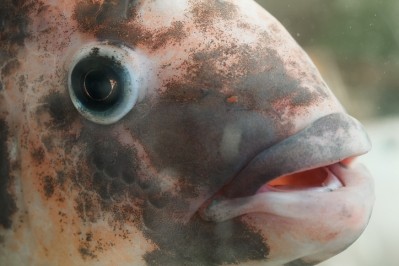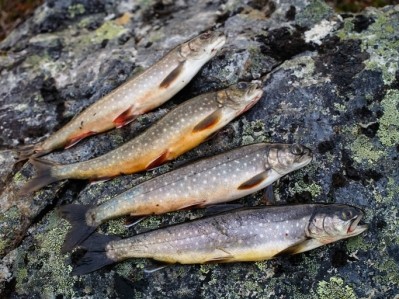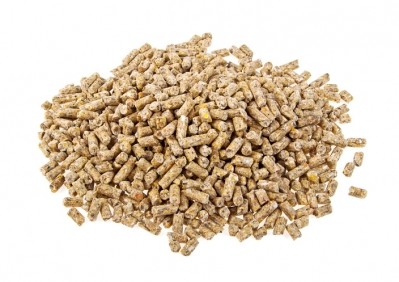Less protein, more energy may boost tilapia reproduction

A team of researchers from several universities in Brazil explored the use of diets with differing protein and energy levels on the growth and reproduction abilities of female Nile tilapia.
The group published its work in the journal Aquaculture.
“Therefore, the objective of this study was to assess the growth and reproductive performance of female Nile tilapia (Oreochromis niloticus) fed diets containing different levels of digestible protein (DP) and digestible energy (DE),” the researchers said.
The research team members found that fish getting diets with lower amounts of protein and energy tapped body reserves during reproduction supporting egg development in place of somatic growth, they said.
“Diets containing 280 g kg− 1 DP and 16.74 MJ kg− 1 DE (16.73 g DP/MJ DE) are recommended because lower egg productivity may be offset by the production of larger eggs and larvae that may have better chances of survival,” the researchers said.
Why protein and energy levels?
Controlling sexual maturation and production of high-quality fry are important elements for aquaculture producers, said the researchers. Adequate nutrition is important for breeding stock as nutrition has been linked with fertility, gamete quality, gametogenesis and offspring initial development.
Imbalanced diets or inadequate nutrients can hinder growth and reproduction performance for both male and female fish, they said. Among the nutrients considered, proteins have been found to play an important role in vitellogenesis, yolk composition and offspring quality.
“Furthermore, actively reproducing female tilapia require a large amount of metabolic energy for physiological processes, and deficiency or excess of this component can affect growth and/or reproduction,” they said.
It is important to establish nutritional requirements in terms of the energy to protein ratio for reproducing fish to ensure that fish have adequate nutrient consumption, are able to use fat as an economizing factor with protein and to prevent build of up fat in amounts that would impede fish health, said the researchers.
“Furthermore, it is important to determine these requirements in terms of digestible nutrients because this optimizes the utilization of these nutrients and promotes greater quality in feed manufacture,” they said.
Feeding trial details
In the feeding trial, 567 female Nile tilapia were given one of nine different diets for a period of 260 days, the researchers said.
The diets included combinations of 280, 340 or 400g kg-1 digestible protein and 11.72, 14.23 or 16.74 MJ kg-1 digestible energy, they said.
After a mating period, female fish were checked for eggs, which were collected and incubated and fish were weighed and measured, they said. Total volume of eggs produced also was measured and, upon hatching, a selection of larvae were measured.
Parameters recorded included the absolute fecundity or total number of eggs produced; the number of eggs for a mated female or relative fecundity; average weight of eggs and average weight of larvae at hatching, they said. Fish were also checked for mean weight and length, apparent feed conversion, specific growth rate, condition and survival.
The tilapia were harvested and the viscera, liver and gonads were weighed and the hepatosomatic index, gonadosomatic index and viscerosomatic index were determined, said the researchers.
Results
Overall, the fecundity of female tilapia was not found to be altered by the diet, said the researchers. However, levels of digestible energy were inversely proportional to the number of eggs generated per gram of body weight – indicating greater relative fecundity when fish were offered diets with less digestible energy.
“We concluded that feeding reproductively active female Nile tilapia diets containing lower amounts of DP and DE ensures egg production at the expense of somatic growth,” they said. “Furthermore, diets with 280 g kg− 1 DP and 16.74 MJ kg− 1 DE are recommended because the lower egg productivity may be offset by the production of more vigorous offspring that have greater chances of survival.”
Levels of digestible protein and energy independently were found to alter egg weight and weight of larvae post-hatching, they said. There was a directly proportional relationship for energy levels and an inversely proportional linear relationship for protein.
“Heavier eggs and larvae were produced with diets containing lower DP content and higher DE level,” they said.
There was an interaction between protein and energy with the weight and length of female tilapia, said the researchers. Fish getting more energy and protein had better growth, however fish condition factor, apparent feed conversion, survival along with hepatosomatic and gonadosomatic indexes were not altered by the diet.
“Specific growth (SG) and viscerosomatic index (VSI) only experienced a quadratic effect from DE,” they said. “Regardless of protein levels, the greatest SG was obtained with diets containing 15.23 MJ kg− 1 DE (calculated value), and the greatest VSI values resulted from diets containing the highest level of DE.”
Source: Aquaculture
Title: Growth and reproduction of female Nile tilapia fed diets containing different levels of protein and energy
Authors: Robie Bombardelli, Elenice Goes, Sília Sousa, Mirna Syperreck, Marcio Goes, Ahiana Pedreira and Fabio Meurer
DOI: doi.org/10.1016/j.aquaculture.2017.07.031












